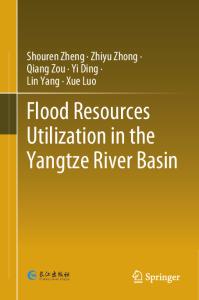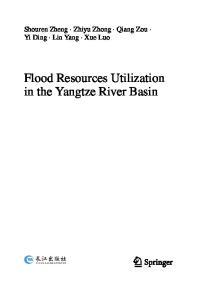Monitoring vegetation change and their potential drivers in Yangtze River Basin of China from 1982 to 2015
- PDF / 7,536,062 Bytes
- 18 Pages / 547.087 x 737.008 pts Page_size
- 108 Downloads / 347 Views
Monitoring vegetation change and their potential drivers in Yangtze River Basin of China from 1982 to 2015 Lili Xu & Guangming Yu & Zhenfa Tu & Yucui Zhang & Nandin-Erdene Tsendbazar
Received: 18 May 2020 / Accepted: 3 September 2020 # Springer Nature Switzerland AG 2020
Abstract Monitoring vegetation change and their potential drivers are important to environmental management. Previous studies on vegetation change detection and driver discrimination were two independent fields. Specifically, change detection methods focus on nonlinear and linear change behaviors, i.e., abrupt change (AC) and gradual change (GC). But driver discrimination studies mainly used linear coupling models which rarely concerned the nonlinear behaviors of vegetation. The two diagnoses need be treated as sequential flow because they have inner causality mechanisms. Furthermore, ACs concealed in time series may induce over/underestimate contributions from human. We chose the Yangtze River Basin of China (YRB) as a study area, first separated ACs from GCs using breaks for additive and seasonal trend method, then discriminated drivers of GCs using optimized Restrend method. Results showed that (1) 2.83% of YRB were ACs with hotspots in 1998 (30.2%), 2003 (10.4%), and 2002 (7.6%); 66.7% of YRB experienced GC with 94.8% of which were
positive; and (2) climate induced more area but less dramatic GCs than human activities. Further analysis showed that temperature was the main climate driver to GCs, while human-induced GCs were related to local eco-policies. The widely occurring ACs in 1998 were related to the flooding catastrophe, while the dramatic ACs in sub-basin 12 in 2003 may result from urbanization. This paper provides clear insights on the vegetation changes and their drivers at a relatively long perspective (i.e., 34 years). Sequential combination of specifying different vegetation behaviors with driver analysis could improve driver characterizations, which is key to environmental assessment and management in YRB.
L. Xu : G. Yu : Z. Tu : Y. Zhang Key Laboratory for Geographical Process Analysis & Simulation of Hubei Province, Central China Normal University, Wuhan 430079, China
Profiling vegetation cover change and their drivers in a relatively longer period is essential for understanding evolutions and exchange mechanisms of involved elements in local man-land systems (Gries et al. 2019). On decades scale, climate variables and human activities are two main drivers that could deeply influence the vegetation cover on the Earth (Hao et al. 2018; Huang et al. 2016; Liu et al. 2018). Climate variables such as precipitation, temperature, and sun radiation drive the plant physiological processes such as photosynthesis, respiratory, and transpiration, while human activities, such as urbanization, deforestation, grazing prohibition policy,
L. Xu (*) : G. Yu : Z. Tu : Y. Zhang College of Urban and Environmental Sciences, Central China Normal University, Wuhan 430079, China e-mail: [email protected] N. middle stream > downstream). It ind
Data Loading...











